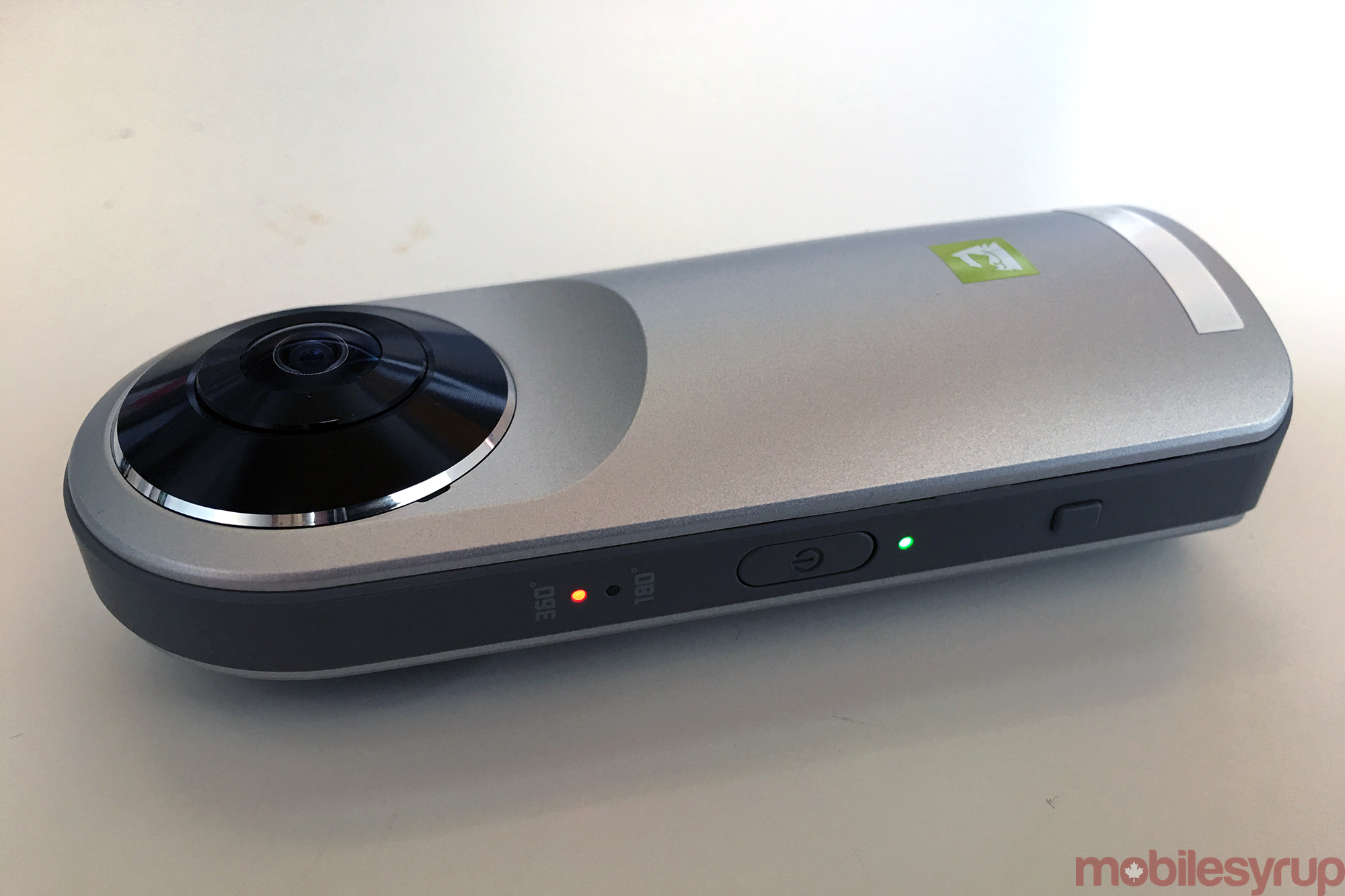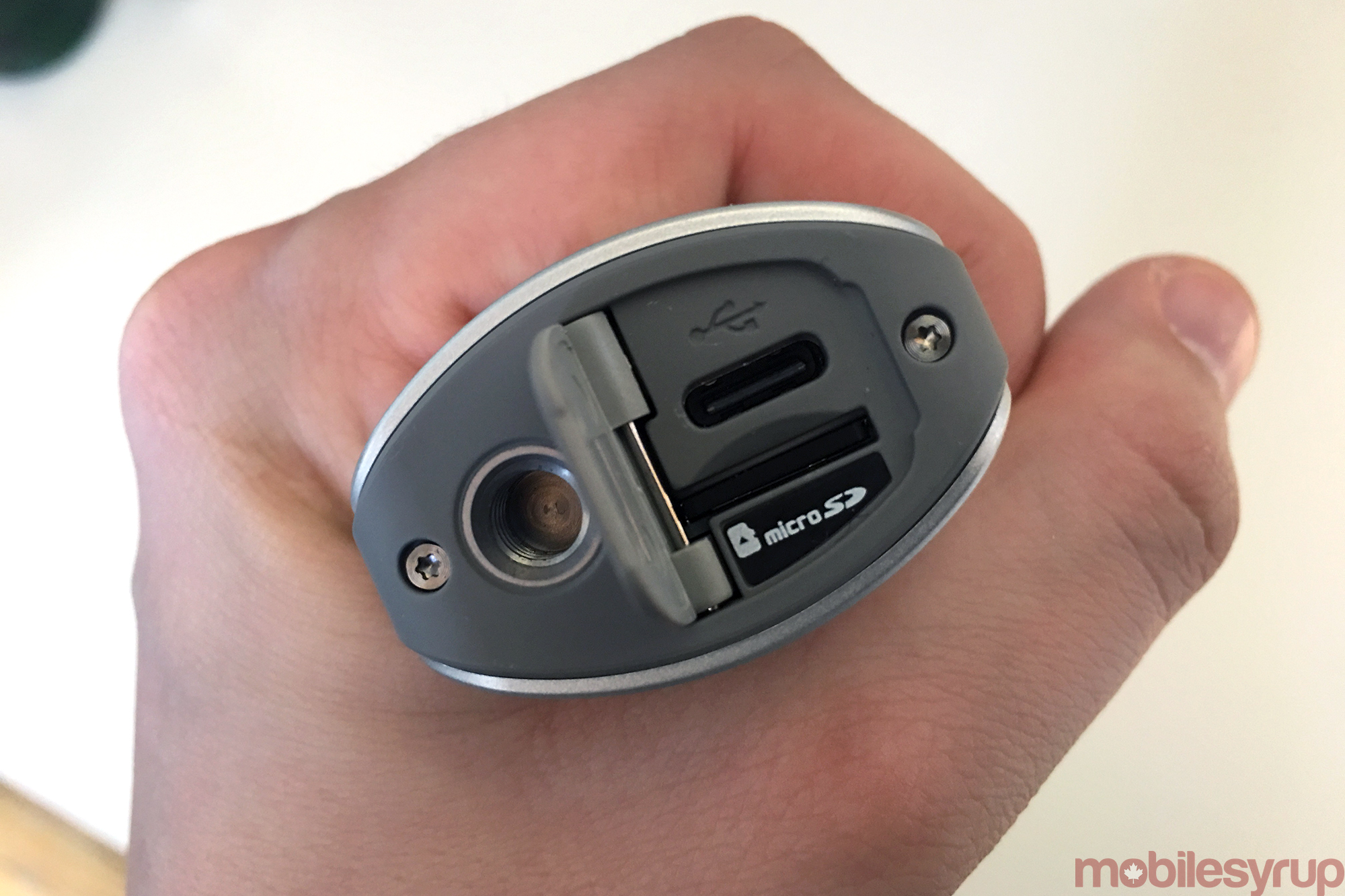
LG’s recently released G5 accessory, the LG 360 Cam, offers users a fascinating, albeit not very practical way to view the world around them.
The device itself isn’t very stylish, opting for a gray body, a single button, and a USB Type-C port on its base. It sits at 3.5-inches tall and features two large black 200-degree lenses that face on opposite sides of the shooter.
In terms of actual use, a long press on the 360 Cam’s main button activates video, where as a quick press shoots individual photographs. The device can also be connected to the G5, giving users a live video feed of the world around them, the ability to customize settings such as ISO, shutter speed and white balance, and most importantly, remote shooting, allowing the G5 to act as a shutter button (more on this later).

For the most part, the device performed excellently during my time with it, though I do question how many people will actually want to shoot 360 photos. It’s also difficult to snap a photo without you being in it.
For example, when trying to shoot San Francisco’s beautiful Presido Park, I’d often had to hold the camera up in one arm to capture an image with enough height to view the landscape. This resulted in my hand, and in some cases, my entire body, being stitched into the photograph.
Using the G5 as a shutter button yielded similar results because the device’s range wasn’t far enough to allow me to move out of the frame. Unlike traditional photography, 360 images capture the entire world around you, giving a different perspective on the world, but also making snapping great photos more difficult than a standard camera.
Furthermore, while the 360 Cam is one of the first, affordable 360 cameras, I was disappointed with its lowlight performance. Unless lighting is ideal, images tend to be noisey. The same can be said about video, though it’s also worth noting that when videos filmed with the 360 Cam are enlarged, they tend to look pixelated, leading me to wonder if despite the 1080p resolution of video content, it’s filmed at a relatively low bitrate.

It’s also difficult to get files off the actual G5. They first need to be downloaded to the phone and then shared via a cloud-based hard drive app like Google Drive or Dropbox. Videos actually can’t even be viewed until they’re downloaded from the Cam 360 to the G5.
The biggest issue I’ve experienced with the Cam 360, and this could be a result of the technology in general, or even the stitching process, is a number of the photos I shot seem to be off axis. This means that sliding left and right through the photo doesn’t work properly.
Instead, the axis of rotation is located in another area of the photo. It’s unclear if this is a result of shooting the image or video off kilter on a surface that isn’t level, or an issue with the Cam 360. LG told us that the Cam 360 needs to be intermittently re-calibrated. Unfortunately, a number of my photos and videos, some from San Francisco’s scenic Presido Park, aren’t viewable because of this problem (the last photo in the gallery below if an example of the issue). Calibration does however seem to fix this glitch.

Also, while earlier videos I shot with the Cam 360 turned out great, when I sat down to write this story, 180-degrees of every video was no longer in focus. Again, it’s unclear what caused this issue, but subsequent videos we captured with the retail version of the Cam 360 turned out fine.
Regardless, I’ve had a significant amount of fun expirementing with the G5’s 360 Cam. The device has opened my mind up to a new realm of photography possibilities, though I’m wondering how practical 360 photos will continue to be once the initial wow factor has worn off.
What will be interesting, is how the $299 LG Cam 360 compares to Samsung’s upcoming $400 USD Gear 360. In terms of technical specs, the more expensive Gear beats LG’s device in nearly every category. The 360 Cam features dual 13 megapixel wide-angle cameras, 2K video recording and 16 megapixel spherical image support. In comparison, the Cam 360 utilizes a 30 megapixel sensor and supports 4K video, as well as an aperture of f/2.0, significantly more impressive technical specs.
And finally, it’s worth noting that the 360 Cam only seems to work with the LG G5 and not any Android device.
When both the Cam 360 and the Gear 360 are released, we plan to put together a story comparing both devices.
Check out the 360 photos and video I shot over the last few week San Francisco, rural Ontario and at MobileSyrup’s office in Toronto.
The 360 photos are only compatible in Google’s Chrome web browser.
Related reading: LG G5 review: An imperfect start to LG’s modular future
MobileSyrup may earn a commission from purchases made via our links, which helps fund the journalism we provide free on our website. These links do not influence our editorial content. Support us here.


